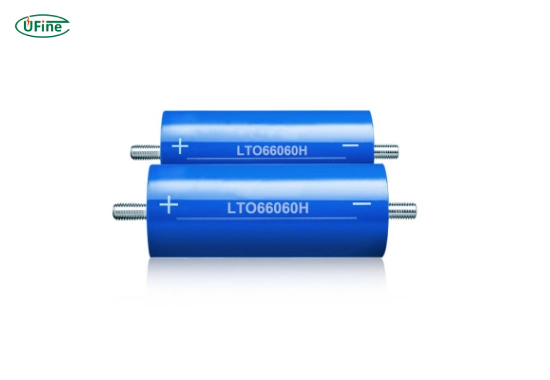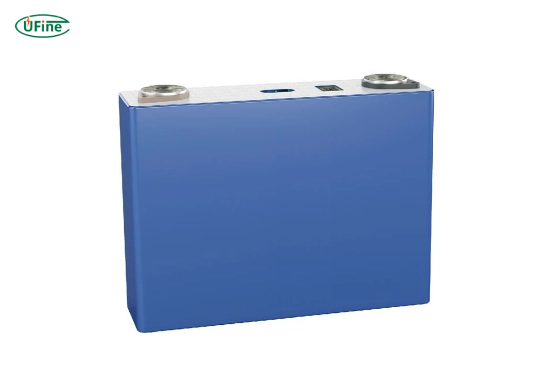Lithium Titanate Oxide (LTO) batteries and Nickel Manganese Cobalt (NMC) batteries have emerged as two prominent technologies in the rapidly evolving world of energy storage. Each has unique advantages and applications, making them suitable for different needs in the energy sector. This article comprehensively compares LTO and NMC batteries, exploring their chemistry, performance characteristics, advantages, disadvantages, and applications. By the end of this discussion, you will better understand which battery technology better suits your specific requirements.
Part 1. What are LTO batteries?
Lithium Titanate Oxide (LTO) batteries are a type of lithium-ion battery that utilizes lithium titanate as the anode material. This unique composition allows LTO batteries to offer several distinct characteristics that set them apart from other lithium-ion technologies.
Key Characteristics of LTO Batteries
- Fast Charging: LTO batteries can charge significantly higher rates than traditional lithium-ion batteries, often achieving full charge in under 30 minutes.
- Long Cycle Life: One of the standout features of LTO batteries is their impressive cycle life, often exceeding 20,000 cycles. This longevity makes them ideal for applications requiring frequent charging and discharging.
- Wide Temperature Range: LTO batteries can operate effectively in extreme temperatures, ranging from -30°C to 55°C. This resilience makes them suitable for various environments.
- Safety: LTO batteries are less prone to thermal runaway due to their stable chemistry than other lithium-ion chemistries.
Part 2. What are NMC batteries?
Nickel Manganese Cobalt (NMC) batteries are another type of lithium-ion battery that combines nickel, manganese, and cobalt in varying ratios to optimize performance. This composition allows for a balance between energy density, stability, and cost-effectiveness.
Key Characteristics of NMC Batteries
- High Energy Density: NMC batteries typically have a higher energy density than LTO batteries, making them suitable for applications where space and weight are critical factors.
- Versatile Applications: Adjusting the ratio of nickel, manganese, and cobalt allows manufacturers to tailor NMC batteries for specific applications, from electric vehicles (EVs) to grid storage.
- Good Thermal Stability: While not as stable as LTO batteries, NMC batteries offer reasonable thermal stability under normal operating conditions.
- Cost-Effectiveness: With cobalt being one of the more expensive materials used in battery production, NMC batteries can be designed with varying amounts of cobalt to manage costs effectively.
Part 3. How do LTO and NMC batteries compare in terms of performance?
When evaluating the performance of LTO and NMC batteries, several critical factors come into play that can significantly influence their suitability for various applications.
LTO batteries excel in areas requiring rapid charging and exceptional cycle life. Their ability to charge fully in under 30 minutes makes them ideal for minimizing downtime—think public transportation systems or emergency backup solutions. Additionally, with a lifespan exceeding 20,000 cycles, LTO batteries are particularly advantageous in applications involving frequent cycling.
On the other hand, NMC batteries shine when it comes to energy density. With energy densities reaching up to 250 Wh/kg, they are well-suited for applications where space is at a premium—such as electric vehicles or portable electronics. The versatility in adjusting the ratios of nickel, manganese, and cobalt allows manufacturers to optimize these batteries for specific needs while maintaining a balance between performance and cost.
However, while NMC offers higher energy density, it falls short in cycle life compared to LTO. Typically lasting around 2,000-3,000 cycles, NMC may require more frequent replacements in high-use scenarios. Moreover, although both battery types exhibit good thermal stability under normal conditions, NMC is slightly more susceptible to thermal runaway incidents if not correctly managed.
To summarize these performance characteristics clearly:
|
Feature |
LTO Batteries |
NMC Batteries |
|
Energy Density |
Lower (around 70 Wh/kg) |
Higher (up to 250 Wh/kg) |
|
Cycle Life |
Very high (up to 20,000 cycles) |
Moderate (around 2,000-3,000 cycles) |
|
Charge Time |
Speedy (under 30 minutes) |
Moderate (1-2 hours) |
|
Temperature Range |
Wide (-30°C to 55°C) |
Moderate (-20°C to 60°C) |
|
Cost |
Higher initial cost |
Generally lower initial cost |
Part 4. What are the advantages of LTO batteries?
LTO batteries come with several compelling advantages:
- Exceptional Longevity: With a cycle life exceeding 20,000 cycles, these batteries can last significantly longer than many alternatives.
- Rapid Charging Capabilities: Charging quickly is particularly beneficial for applications such as public transportation or emergency backup systems.
- Safety Features: Their inherent stability reduces the risk of overheating or fires, making them safer for various uses.
Part 5. What are the disadvantages of LTO batteries?
Despite their numerous advantages, LTO batteries also have some drawbacks:
- Lower Energy Density: Their lower energy density means they require more space for the same amount of stored energy compared to NMC options.
- Higher Cost: The initial investment is typically higher than other battery technologies due to the materials used.
Part 6. What are the advantages of NMC batteries?
NMC batteries also offer several benefits:
- High Energy Density: Their superior energy density makes them ideal for applications like electric vehicles where space and weight are critical.
- Customizability: The ability to adjust material ratios allows manufacturers to optimize performance based on specific needs.
Part 7. What are the disadvantages of NMC batteries?
However, NMC technology isn’t without its downsides:
- Shorter Cycle Life: Compared to LTO, NMC has a shorter lifespan, with around 2,000-3,000 cycles.
- Thermal Stability Concerns: While generally stable, they can be more susceptible to thermal runaway under certain conditions than LTO.
Part 8. Common Applications for LTO Batteries
LTO batteries find their place in various applications due to their unique properties:
- Public Transportation: Buses and trams benefit from rapid charging capabilities and long cycle life.
- Energy Storage Systems are ideal for grid storage solutions where longevity is crucial.
- Military Applications: Their safety features make them suitable for defense-related uses where reliability is paramount.
Part 9. Common Applications for NMC Batteries
NMC technology is widely utilized across different sectors:
- Electric Vehicles (EVs): Their high energy density makes them popular among EV manufacturers.
- Consumer Electronics: Smartphones and laptops often use NMC due to their compact size and efficiency.
- Renewable Energy Storage: They serve well in solar and wind energy systems where space efficiency is critical.
Part 10. FAQs
-
What is the lifespan of an LTO battery?
LTO batteries can last up to 20,000 cycles or more under optimal conditions. -
How fast can an LTO battery charge?
Due to its rapid charging capabilities, an LTO battery can achieve a full charge in under 30 minutes. -
Are NMC batteries safe?
While generally safe, NMC batteries can pose risks related to thermal runaway if not correctly managed during operation. -
Which battery type is better for electric vehicles?
NMC batteries are typically preferred for electric vehicles due to their higher energy density and lighter weight. -
Can LTO and NMC be used interchangeably?
While both serve similar purposes in energy storage solutions, they are not interchangeable due to their distinct characteristics and optimal use cases.
Related Tags:
More Articles

How to Choose the Best Floor Scrubber Battery for Commercial Cleaning?
Selecting the ideal floor scrubber battery ensures a long runtime, rapid charging, and minimal maintenance for efficient commercial cleaning operations.
Battery for Blower vs Battery for Leaf Vacuum: Which One Should You Choose?
Battery for blower vs leaf vacuum—learn the key differences in power, fit, and runtime to choose the right battery for your outdoor tool needs.
How to Choose the Right Battery for Blower?
Choosing the right blower battery? Consider voltage, capacity, chemistry & usage. This guide helps match the best battery for peak performance.
How to Choose the Best Insulated Battery Box for Lithium Batteries?
Choosing the Best Insulated Battery Box for Lithium Batteries? Discover key factors such as size, material, and safety for optimal protection and performance.
7 Critical Elements on a Lithium Battery Shipping Label
What must be on a lithium battery shipping label? Learn 7 key elements to ensure safety, legal compliance, and correct handling across all transport modes.






